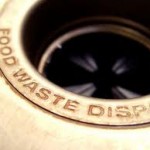Garbage Disposals: The Do’s and Don’ts

Not everything is suitable for a garbage disposal.
Garbage disposals: The Do’s and Don’ts
As a leading home inspection company in Western New York, we have seen our share of garbage disposals. Some sound like a Mack truck when they are turned on and others, well, you can hardly tell they are running.
Garbage disposals are those big things under the kitchen sink; they can work tirelessly for years without a problem and we tend to take them for granted.
Like anything else around the house, they can last even longer with a little routine maintenance and by following a few simple rules.
As an experienced home inspector and committed D-I-Yer, I thought I would put some of the myths to rest and give you the straight story on the do’s and don’ts of using a garbage disposal.
Before we begin, be sure to read and follow all of the manufacturer’s directions and instructions on the installation and use of a garbage disposal. They can be a dangerous appliance in the kitchen if not used properly and safely. There are a variety of makes and models available, some which may claim to allow for grinding of some of the listed materials here. For our purposes, the lists are compiled and based upon a base garbage disposal model.
Size Matters
If you are installing a new garbage disposal as a replacement or completely new installation, a ½ hp disposal is the minimum size recommended for household use, a 3/4 hp garbage disposal is better.
Cold Water Only
- Use only cold water during operation and allow water to continue to run 30 to 60 seconds after use. The reason for cold water is it helps keep the motor cooler during operation and avoid overheating. Allowing the water to continue to run for 30-60 seconds after use helps ensure waste is properly flushed through the pipes.
- Avoid using hot water during operation of the garbage disposal because the hot water tends to liquefy greases and oils that can solidify in the pipes once cooled.
Not Everything Goes in the Disposal
Contrary to popular belief you cannot put everything through the garbage disposal. A good rule of thumb is if it is a man-made or manufactured item, then it has no business in the garbage disposal or sewage system.
The list includes:
- Cigarette butts
- Glass
- Metal
- Light bulbs
- Twist ties, rubber bands, etc
- Nails, screws, thumb tacks, etc.
- Hair
- Grease
- Fabric, sponges, rags, etc.
Likewise, not all food items are well suited for the garbage disposal. This list includes:
- Fibrous foods such as celery, banana peels, artichokes, asparagus, etc.
- Chicken bones
- Fruit pits
- Cooked rice and pasta
- Coffee filters and tea bags
- Egg shells (they turn to sand like material)
- Onion skins
- Shrimp shells
- Grease
Eliminate Odors
During the course of performing our home inspections, we have been asked countless times about odors emanating from a kitchen sink and garbage disposal. The fix is quite simple and will go a long way in keeping the disposal fresh and sharp.
Simply grind some citrus fruit peels such as a lemon, orange or lime with some ice cubes. Some people will go as far as making vinegar ice cubes to help control the odors. I do not believe going to that extreme is necessary.
If you introduce the citrus peels and ice cubes to your garbage disposal on a regular basis, say weekly, you will keep the odors under control. The ice will help keep the blades sharp and scrape the interior of the disposal so food particles do not accumulate.


